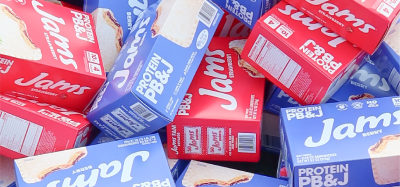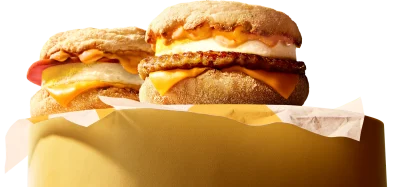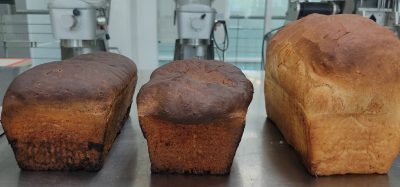Rheology as a design tool for novel food concepts
- Like
- Digg
- Del
- Tumblr
- VKontakte
- Buffer
- Love This
- Odnoklassniki
- Meneame
- Blogger
- Amazon
- Yahoo Mail
- Gmail
- AOL
- Newsvine
- HackerNews
- Evernote
- MySpace
- Mail.ru
- Viadeo
- Line
- Comments
- Yummly
- SMS
- Viber
- Telegram
- Subscribe
- Skype
- Facebook Messenger
- Kakao
- LiveJournal
- Yammer
- Edgar
- Fintel
- Mix
- Instapaper
- Copy Link
Posted: 2 September 2014 | Leonard M. C. Sagis and Elke Scholten, Physics and Physical Chemistry of Food, Wageningen University | 2 comments
The rheological properties of food products are very important in the production, preparation, and consumption of food. Rheological measurements are therefore a highly useful tool in the design of novel food concepts. Here we discuss the use of rheological techniques to develop and characterise pasta and noodle products, with high vegetable particle content (up to 30 per cent broccoli particles, based on dry matter). This product is aimed at young children, to increase their vegetable intake, and to contribute to a healthier diet that could prevent obesity problems at a later age. Rheological techniques such as viscometry, oscillatory shear rheometry, and extension tests were used to maximise the volume fraction of incorporated broccoli particles, while maintaining favourable sensory attributes. The result of this study was a product with a vegetable content far exceeding most pasta and noodle products currently on the market.


Leonard M. C. Sagis, Physics and Physical Chemistry of Food, Wageningen University
Broccoli consists of roughly 90 per cent water, and when a high volume fraction of wet particles is dispersed in a pasta or noodle dough, this water may migrate to the matrix (gluten in case of pasta noodles, or a starch gel network, in case of noodles). This migration can result in a weakened product. For this reason we decided to freeze-dry the particles prior to adding them to the dough. In contrast to wet particles, the incorporation of high volume fractions of dried vegetable particles typically leads to a significant increase in the elastic and viscous properties of the dough, and may lead to a tough rubbery product1. To quantify the effect of freeze-dried vegetable particles on the viscoelastic properties of the dough, we measured these properties in oscillatory shear tests, in which we varied the particle volume fraction. We performed these tests not only for gluten- or starchbased dough, but also for a much simpler matrix material, consisting of fish gelatine.
Dispersion rheology is a field with a long history of seminal contributions, such as those by Einstein and Batchelor3 describing the dependence of viscosity on particle volume fraction of, respectively, dilute and semi-dilute dispersions of hard spherical particles. Although our vegetable particles are neither spherical nor hard, we will show that the rheological properties of our systems are still remarkably well described by (similar) mean field theories. Since the volume fractions we use in our dough are well beyond the semi-dilute regime we elected to use the Frankel and Acrivos model to describe the dough’s elastic properties4. For gelled materials this model takes the form:
In this equation, is the complex shear modulus of the dispersion, is the complex shear modulus of the bare matrix, and is the maximum packing fraction of the particles (usually a value between 0.6-0.75, depending on particle shape, poly-dispersity, and type of packing). An equation like the Frankel and Acrivos model predicts a divergence of the modulus when the particle volume fraction approaches . For broccoli particles dispersed in fish gelatine we see this divergence occur at volume fractions around 7.5 per cent (v/v), far below the maximum packing fraction. This is a strong indication that the freeze-dried particles are swelling significantly when dispersed in the matrix. To quantify the degree of swelling we prepared dilute dispersions of the particles in water, with volume fractions ranging from 0.02-0.5 per cent (v/v), and measured their viscosity with an Ubbelohde viscometer. In this dilute regime the viscosity of the dispersion is given by the Einstein equation:
In this equation, is the continuous phase viscosity, is the volume fraction based on dry volume, and is the swelling factor. By plotting the viscosity of the samples against , we can determine from the slope of the curve. Our data showed that in pure water the particles can swell by a factor of 7.6 (which is equivalent to an uptake of water of about 86 per cent) (Figure 1). This must be seen as an upper bound for the swelling. In a dough matrix the degree of swelling will be lower, since the mechanical strength of the dough matrix may limit the swelling. Moreover, in the dough other biopolymers are present that compete with the particles for the available water. In starch noodle dough we see a considerable increase of the complex shear modulus, by roughly two orders of magnitude, upon incorporation of 20 per cent v/v broccoli particles (based on dry volume) in the matrix. This is again far beyond what is predicted by the Frankel and Acrivos equation, and indicates that the particles are swelling significantly, to similar degrees as we observed in the fish gelatine samples. After cooking, this increase leads to a noodle which is too firm and rubbery. To alleviate this problem we added several hydrocolloids to the starch dough mixture. These hydrocolloids bind water and compete with the broccoli particles for the available water, and thereby limit the degree of swelling of the particles5. We found that adding one per cent w/w of xanthan gum to a dough with 20 per cent broccoli particles, gave a significant reduction in dough elasticity, by about an order of magnitude, and after cooking this mixture resulted in a pasta with strength and firmness comparable to commercial pasta products.
In durum wheat semolina pasta dough we see a far smaller increase of the elastic properties of the dough upon incorporation of dried broccoli particles. Even up to volume fractions as high as 20 per cent, the shear modulus of the dough is close to its prediction by the Frankel and Acrivos equation, which indicates that the particles are prevented from swelling by the gluten matrix of the pasta dough.
The incorporation of broccoli particles and their intense swelling behaviour leads to differences in the sensorial attributes of pasta and noodles, such as firmness, stickiness, and cooking loss (material that detaches from the product into the cooking water upon cooking). High quality pasta is often associated with a low cooking loss, high firmness and low stickiness. We have evaluated several textural attributes using extensional rheology to gain insight in the effect of broccoli addition to the products5. By stretching the noodle strands, they elongate and break at a certain deformation (elongation). From the force needed to stretch and break the strands, textural attributes such as the Young’s modulus (related to stiffness), the fracture stress (related to strength) and the fracture strain (related to extensibility) were obtained. The results show that incorporation of more broccoli particles (20 per cent) into noodle dough leads to an increase in the firmness and strength of the noodles compared to noodles in which only a low concentration of broccoli (four per cent) is added. We compared both the low content (four per cent) and high content (20 per cent) noodles also to commercial pasta, and saw that both the strength and firmness is still lower than for commercial pasta. When different hydrocolloids were added (in a concentration of 0.5 or 1 per cent), we saw that the stiffness of the noodles increased for both types of noodles. However, for the attribute strength, we saw that the effect of hydrocolloid incorporation depends on the amount of broccoli present; upon addition of hydrocolloids, the strength decreased in the case of high broccoli content (20 per cent) while an increase was observed for low content of broccoli (four per cent). For the extensibility, we saw that our low broccoli content (four per cent) noodles show much larger values than the commercial pasta. Incorporation of more broccoli (20 per cent) or the addition of hydrocolloids both lead to a decrease of the extensibility to values comparable to the reference commercial pasta. These results show that the textural attributes of the noodles can easily be changed by altering the amount of broccoli added, the type and the concentration of the different hydrocolloids (such as locust bean gum, guar gum, konjac glucomannan, and hydroxypropyl methylcellulose).
For the samples with xanthan, the values for the different textural attributes where most similar to the commercial samples, probably because this hydrocolloid prevents the swelling of the broccoli the most, thereby giving less impact on the noodle dough itself. The addition of hydrocolloids also limited cooking loss, which is associated with a low degree of stickiness, and therefore advantageous for quality aspects.
For pasta, we also compared the different textural attributes with a commercial pasta6. For low content of broccoli (four per cent), no differences in the textural attributes were observed. However, for larger content (20 per cent), we observed that the attributes changed slightly. Both the strength and the stiffness increased, while the extensibility decreased. However, the changes were very limited, and may not even affect the sensory properties of the pasta. To evaluate whether the incorporation of the broccoli also leads to changes in their mouth-feel, we performed a sensory test, in which we asked people to assess pasta with different broccoli content of 10, 20 and 30 per cent broccoli7. The assessors rated the pasta for liking (overall liking, liking in texture, taste and colour), and for the sensory attributes firmness and stickiness. The assessors indicated that the firmness decreased for higher broccoli content (up to 30 per cent) and the stickiness did not change. We also saw this decrease in firmness when we measured the textural attributes for pasta with 30 per cent broccoli. Both the strength and the stiffness decreased when the broccoli content was increased from 20 to 30 per cent. Apparently, the incorporation of 30 per cent is too much for the pasta matrix to handle, and the pasta starts to fall apart. Even though this change in the textural properties was obvious, these samples were not rated significantly less for liking. All samples (up to 30 per cent broccoli) were rated as acceptable. Therefore, from a sensorial point of view, up to 30 per cent broccoli can be added without compromising quality to a large extent.
Since our aim was to increase the vegetable intake of children, we also looked at the nutritional value of the pastas. A beneficial effect of the broccoli incorporation can be obtained only when the broccoli and the healthy components of broccoli stay in the pasta during the cooking process. When the broccoli would leach out (as cooking loss), the health benefits would be minimal. We expected that the loss of the broccoli would be related to the microstructure of the pasta. The more broccoli added, the more interrupted the pasta dough network, and the larger the chance that the broccoli would leach out. To investigate the effect of the microstructure of the pasta, we measured the amount of glucosinolates left in the pasta after cooking7. Glucosinolates are considered to have beneficial health effects, and are present in sufficient amounts in broccoli8. The results show that for increasing amount of broccoli, the amount of glucosinolates also increased, indicating that the broccoli stayed within the pasta during cooking. However, when 30 per cent of broccoli was incorporated, the amount of glucosinolates found was not more than found for the pasta with 20 per cent, as shown in Figure 2 (this effect was also seen for the noodles). Apparently, at 30 per cent, the broccoli leaches out of the pasta, as the dough is not capable of holding such a large amount of particles. This was also concluded from the change in textural attributes of the pasta. Therefore, from a nutritional point of view, there is no use of adding more than 20 per cent of broccoli.
To conclude, these results show that we are able to incorporate 20 per cent of broccoli to increase the nutritional value of the pasta without compromising sensorial attributes and quality of the products (Figure 3). These products may be used to increase the vegetable intake of children, and this concept could be used to design novel healthy foods.
References
- Petitot, M., Boyer, L., Minier, C., Micard, V., 2010. Fortification of pasta with split pea and faba bean flours: pasta processing and quality evaluation. Food Research International 43, 634.
- Silva, E., Scholten, E., van der Linden, E, Sagis, L.M.C., 2013, Influence of swelling of vegetable particles on structure and rheology of starch matrices. J. Food Engineering 112, 168.
- Batchelor, G.K., 1977, The effect of Brownian motion on the bulk stress in a suspension of spherical particles. J. Fluid Mech. 83, 97.
- Frankel, N.A., Acrivos, A., 1967. On the viscosity of a concentrated suspension of solid spheres. Chemical Engineering Science 22, 847.
- Silva, E., Birkenhake, M., Scholten, E., Sagis, L.M.C., van der Linden, E., 2013. Controlling rheology and structure of sweet potato starch noodles with high broccoli powder content by hydrocolloids. Food Hydrocolloids 30, 42.
- Silva, E., Sagis, L.M.C., van der Linden, E., Scholten, E., 2013. Effect of matrix and particle type on rheological, textural and structural properties of broccoli pasta and noodles. J. Food Engineering 119, 94.
- Silva, E., Gerritsen, L., Dekker, M., van der Linden, , Scholten, E., 2013. High amounts of broccoli in pasta-like products: nutritional evaluation and sensory acceptability. Food and Function, 4, 1700.
- Verkerk, R, Schreiner, M., Krumbein, A., Ciska, E., Holst, B., Rowlands, I., de Schrijver, R., Hansen, M., Gerhauser, C., Mithen, R., Dekker, M., 2009. Glucosinolates in Brassica vegetables: The influence of the food supply chain on intake, bioavailability and human health. Mol. Nutr. Food. Res., 53, S219.
About the author
Leonard Sagis obtained a PhD in Chemical Engineering from Texas A&M University, in 1994. After postdoctoral positions at the Colloid & Interface Science Group of the University of Leiden, and the Institute of Technical Chemistry, University of Amsterdam, he joined the faculty of the Department of Agrotechnology and Food Sciences of Wageningen University, in 1998. His primary research focus there includes soft interface dominated systems, such as foam, emulsions, and dispersions. He is primarily interested in the relation between microstructure of these materials, and their mechanical properties. In his work he combines experimental techniques such as bulk and interfacial rheology, scattering methods, and various forms of microscopy, with theoretical methods based on non-equilibrium thermodynamics.









We need to perform analysis on rheological performance and quality of raw materials, semi-finished and finished products.
PROXIMA SRL is a Consulting Food Engineering Company, working world-wide on development of new industrial bakery, dairy, confectionery products.
PROXIMA SRL also performs analysis on rheological performance and quality of raw materials, semi-finished and finished products.
The development of high quality brand products requires intensive series of applications trials before launching them on the market in order to determine the right processing of selected raw materials and the interactions between them, in optimal recipes with exact process parameters.